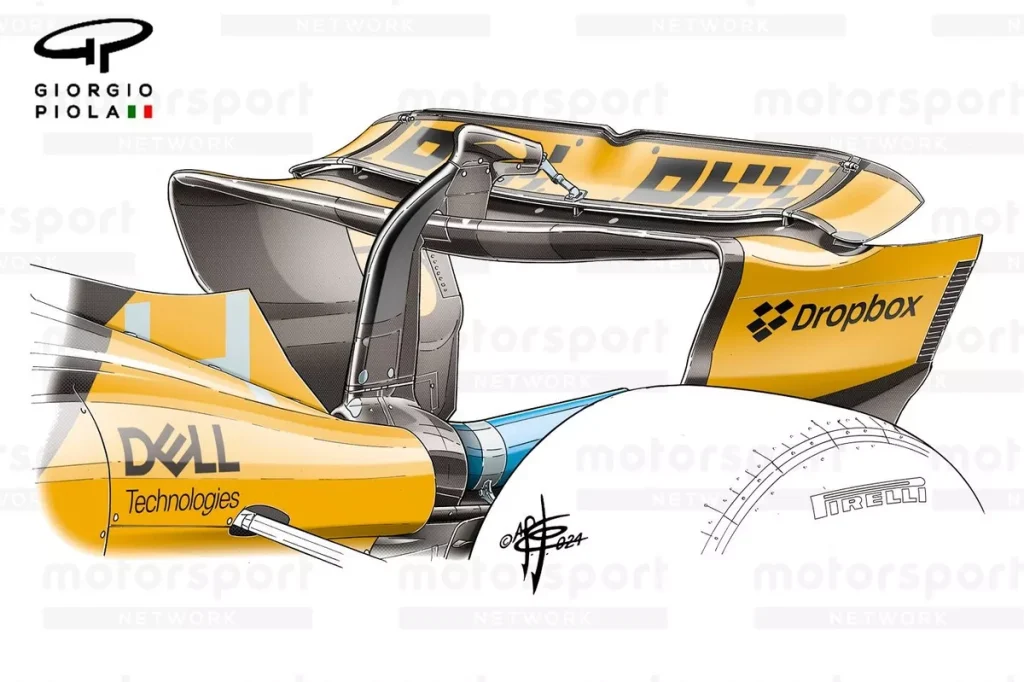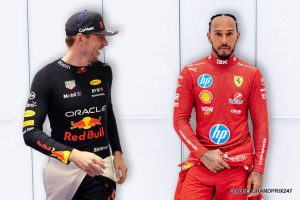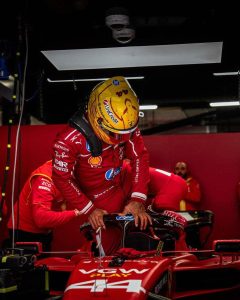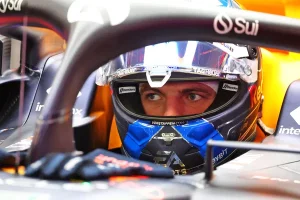F1 REPORT: Did McLaren’s ‘mini-DRS’ rear wing trick help Piastri keep Leclerc at bay in Baku?…….

Did McLaren’s ‘mini-DRS’ rear wing trick help Piastri keep Leclerc at bay in Baku?
McLaren’s rear wing has sparked intrigue following the Azerbaijan Grand Prix, where an interesting feature on Oscar Piastri’s MCL38 was observed. Footage from the rear-facing onboard camera revealed a deformation of the upper flap under load, with the most noticeable change being the outer leading edge of the upper flap tilting upwards as the car’s speed increased. This behavior suggests McLaren may have found a unique method to reduce drag and enhance straight-line speed, a potential reason why Piastri was able to hold off Charles Leclerc, even when the Ferrari driver had the DRS open.

This phenomenon, now being referred to as McLaren’s ‘mini-DRS,’ has reignited discussions about flexible wings in Formula 1. Flexi-wings have long been a controversial area in the sport, as teams continuously push the limits of aeroelasticity to enhance their car’s performance. These wings are designed to deform under load, allowing cars to achieve higher speeds by reducing drag. While teams must adhere to the FIA’s static load tests that aim to limit these designs, once the car is on track, components naturally deform beyond the tested conditions.
The focus earlier in the season has been on front-wing flexibility, but McLaren’s rear wing design now draws attention to the possibility of similar techniques being employed on the back of the car. The flexion in McLaren’s rear wing is thought to occur when the car builds speed, potentially creating an effect similar to DRS, though with less power. This allows the car to benefit from a drag reduction across the lap, even in sections where DRS is not permitted.
The FIA has been aware of McLaren’s rear-wing behavior for several races and, based on onboard footage, appears satisfied that it complies with current regulations. The onboard footage shows the upper flap rotating rearwards under load, with the deformation occurring primarily at high speeds. While this flexion might not replicate the full power of DRS, it still provides a significant aerodynamic advantage, helping McLaren stay competitive, especially on circuits requiring high straight-line speeds.
Interestingly, McLaren’s flexing rear wing was visible not only on the straights but also during the middle sector of the Baku circuit. The footage captured the upper flap lifting slightly in the outer portion, pulling away from the tip section beside it. Though less pronounced in slower sections, the flexion still suggests McLaren is gaining a slight performance boost throughout the lap.
In 2021, the FIA introduced a method to help police rear-wing deformations, requiring teams to place 12 target dots—six on the upper flap and six on the mainplane—on their rear wings. These dots are used to measure the extent of rear-wing movement during races, providing a visual reference for the governing body to monitor any over-rotation of the wing elements. While this system has been effective at ensuring compliance with the rules, McLaren’s design seems to fall within the permissible limits, allowing them to exploit this advantage.
Given the effectiveness of McLaren’s ‘mini-DRS,’ it’s likely that other teams will now explore similar designs to enhance their straight-line speed. However, McLaren has already capitalized on this advantage at several high-speed circuits this season, positioning them favorably for upcoming races.
In conclusion, McLaren’s rear-wing innovation exemplifies the constant battle among Formula 1 teams to push the boundaries of aerodynamic design while remaining within the regulatory framework. As other teams work to catch up, the FIA will likely continue monitoring these flexible components closely, ensuring they remain within the limits of what is considered safe and legal. For now, McLaren’s clever interpretation of the rules has given them a valuable edge in the 2024 season.








